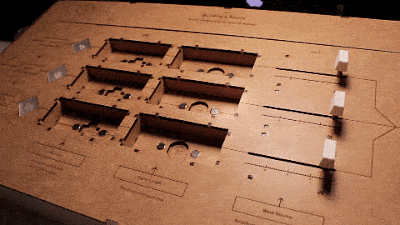

Sound Blocks is a tool to teach children and adults what sound is made of. The project was shortlisted in the Expression category of the IXDA Interaction Awards and it was developed by John Ferreira, Alejandra Molina, Andreas Refsgaard at the CIID using Arduino.
The above short video explains how Sound Blocks work. On the Vimeo page for the video, the CIID (Copenhagen Institute of Interaction Design) team does a good job of explaining how Sound Blocks came about, what they can do, and what the team learned in the process of creating them.
What is sound made of?
It’s a question that seems simple, but as we all know, the simplest things sometimes hide wonderful complexity. The challenge was taken first to understand what factors and aspects sound is created from. There are a lot factors, too many to be conveyed through language alone, in a short period of time.So the team created Sound Blocks, which allows people to learn how, with a few parameters, we can create new sounds, and if desired, imitate real-world sounds. It does this by letting the user control waveform, sound decay, or wave length and volume of three channels, all mixed together. Sound Blocks first and foremost was created as a tool to experiment with sound, it is playful and engaging. The goal is to help children and people of all ages better understand the basic elements that make up a sound.
How does it work?
You are given three channels to experiment with. You can pick a basic waveform, the duration of the wave, and adjust the volume of each channel. It allows you to understand how synthesizers can emulate real world sounds,such as drums or a keyboard, with simple example recipes to get you started quickly.The team’s learnings were plentiful. They learnt a great deal about what sound is and the factors that make sound and musical sound exist. On the physical computing side they learnt about circuitry and using resistances to differentiate objects. Each block has its own resistance value and thus can be used to trigger an exact reaction on another software, which in this case is Abelton Live. Coding skills were also required to identify, transform and send the signals into the sound software.
This longer video is from the 2016 Interaction Awards, for which the Sound Blocks project was shortlisted. It has comments from the CIID team members about the project and includes the above “pitch” video for Sound Blocks.
ADVERTISEMENT





